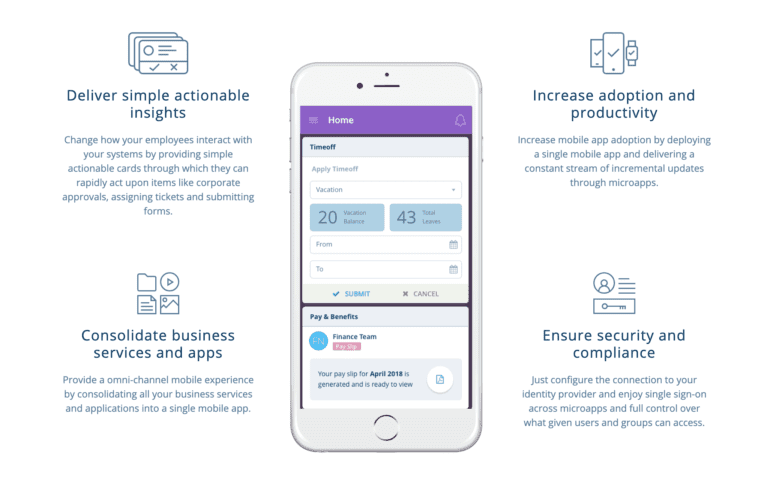TL;DR:
- Generative microapps are emerging technologies that enable organizations to leverage generative AI while minimizing risks.
- They act as intermediaries between users and large language models (LLMs) like ChatGPT or Bard.
- Generative microapps enhance the capabilities of knowledge workers, boosting productivity and improving the quality of work.
- They address unique risks associated with LLMs, such as access control, accuracy, and devaluation.
- Integrating microapps into everyday work tools will become commonplace, leading to widespread adoption.
- A new industry focused on developing specialized generative microapps is expected to thrive.
Main AI News:
In the realm of business, the advent of artificial intelligence (AI) has opened up new possibilities for organizations in terms of job design, task allocation, and responsibility. However, the use of large language models (LLMs), such as generative artificial intelligence (AI), comes with its own set of risks and challenges. To address these concerns, emerging technologies like generative microapps have emerged as viable solution, allowing businesses to harness the potential of generative AI while minimizing risks.
Generative microapps act as intermediaries between users and LLMs like ChatGPT or Bard, providing a range of benefits for organizations. By leveraging microapps, enterprises can augment their knowledge workers’ capabilities using generative AI, leading to increased productivity and improved outcomes.
According to Nader Henein, VP Analyst at Gartner, generative microapps have the potential to revolutionize the workforce. Henein explains, “By 2026, Gartner predicts that 50% of office workers in Fortune 100 companies will be AI-augmented, whether to enhance productivity or raise the overall quality of work.”
An illustrative example is the integration of an LLM with a proprietary research database. Suppose an author is drafting a new research piece. In this scenario, a microapp embedded within the word processing program would analyze each section and utilize its prebuilt prompt library to request examples of supporting research, conflicting findings, and relevant data from the LLM. The microapp would then verify the accuracy of the responses and present them as suggestions or comments within the word processor.
This augmentation extends the author’s capabilities beyond human limitations. No individual can possess knowledge of every published research piece within a database. However, by supplementing an LLM with enterprise data, organizations can leverage this augmented intelligence to access comprehensive insights.
Furthermore, the integration of general-purpose microapps into everyday work tools such as word processors, email clients, and conferencing platforms will become increasingly commonplace. These microapps will initially serve as augments for high-value employees but will eventually be commoditized for all knowledge workers. Consequently, a new industry centered around specialized generative microapp development is poised to grow and flourish.
When delving deeper into the concept of generative microapps, it becomes apparent that they differ from traditional user interactions with LLMs. Instead of users directly interfacing with the LLM, microapps rely on preprogrammed prompts that address specific tasks on behalf of the user. These prompts query the model and receive responses in a predefined format, allowing the microapp’s logic to validate each response before presenting it to the user. This streamlined approach enhances the accuracy and reliability of the generated content.
Generative microapps can either function as stand-alone applications or be integrated as extensions to productivity platforms commonly used by knowledge workers. This integration provides seamless access to generative AI capabilities within familiar tools, empowering users to leverage generative AI without requiring specialized knowledge or extensive training.
One of the key advantages of generative microapps lies in their ability to mitigate risks associated with LLMs. Three critical risks peculiar to LLMs are access control, accuracy, and devaluation. Generative microapps effectively address each of these concerns:
- Access control: Organizations heavily rely on access control mechanisms to safeguard sensitive data. However, when an LLM is supplemented with enterprise data, ensuring adherence to access control rules becomes challenging. Generative microapps act as intermediaries between users and LLMs, preventing direct interaction and reducing the risk of unauthorized access to restricted data.
- Accuracy: “Hallucinations” refer to instances when models generate fictitious yet convincingly confident answers. Through meticulous prompt engineering, generative microapps can mitigate hallucinations by using preset prompts that limit the scope of generated responses. Additionally, microapps can enforce response formats that can be validated before being presented to the user, further enhancing accuracy.
- Devaluation: Organizations may question the value proposition of products and services provided by LLMs, particularly in comparison to those offered by trained professionals. Purpose-built microapps act as augments for knowledge workers, thereby improving the quality of work and boosting productivity. This approach helps mitigate skills shortages while maintaining the value of human expertise, thus safeguarding against the devaluation of professional skills.
To delve deeper into the enterprise use of generative AI, Gartner will present additional analysis at the Gartner IT Symposium/Xpo, one of the most important conferences for CIOs and IT executives. During the event, Gartner analysts and attendees will explore various technologies, insights, and trends shaping the future of IT and business, including the potential of generative AI, business transformation, cybersecurity, customer experience, data analytics, and executive leadership. Stay updated on conference news and updates on Twitter using the hashtag #GartnerSYM.
Conclusion:
The rise of generative microapps represents a significant shift in the business landscape. These innovative technologies enable organizations to harness the power of generative AI while mitigating risks associated with large language models. By augmenting the knowledge of workers, microapps enhance productivity and improve the quality of work. The integration of microapps into everyday work tools is set to become the norm, resulting in widespread adoption across industries. Additionally, the development of specialized generative microapps will create new market opportunities and drive growth in the industry.

